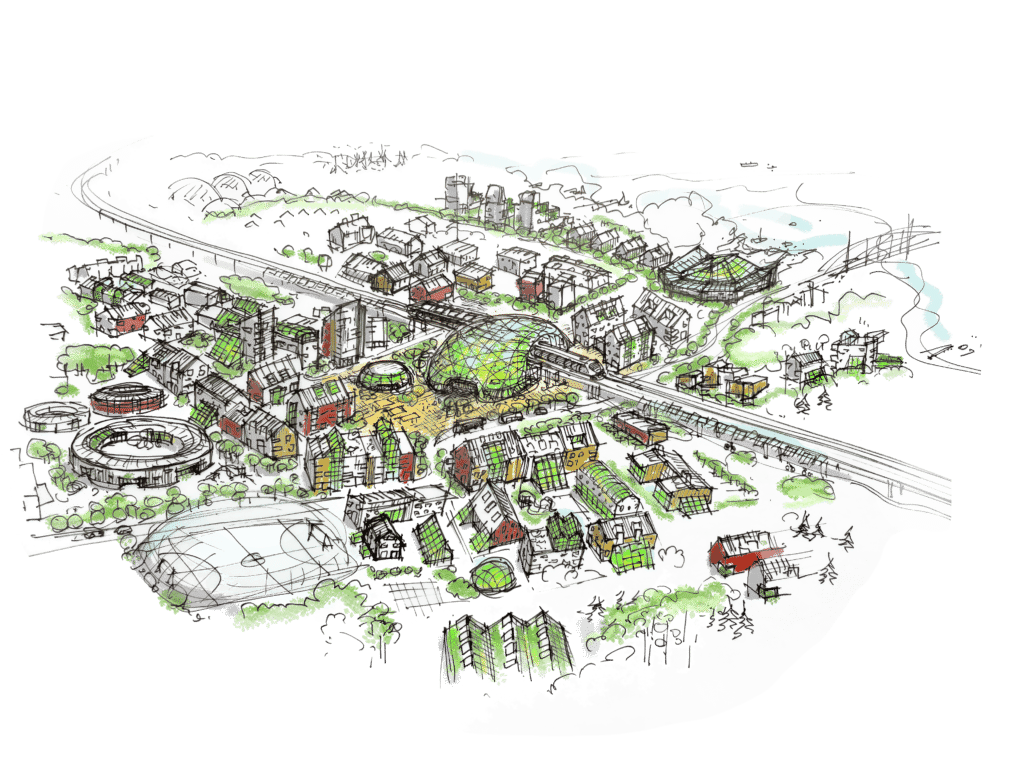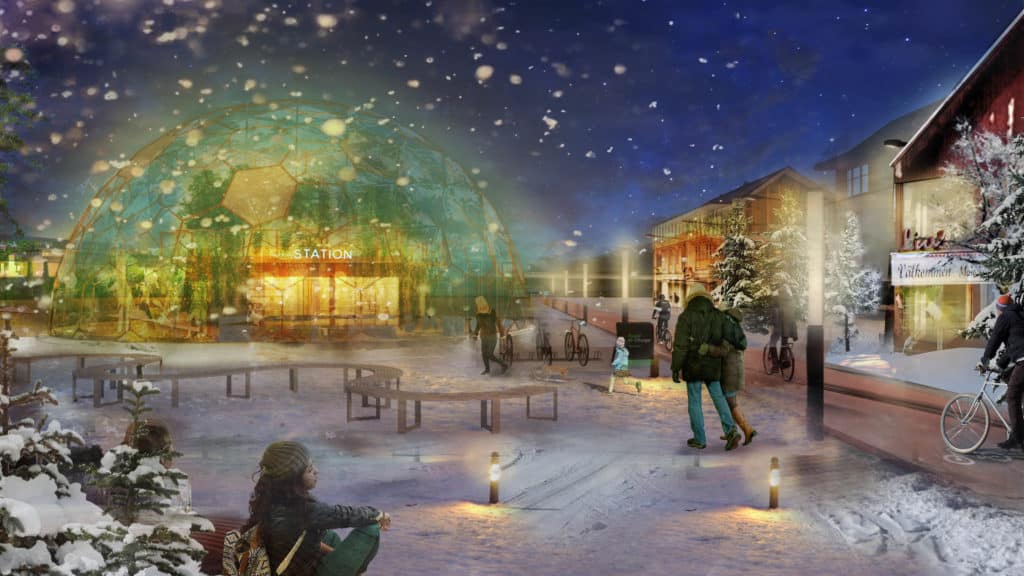 Illustration: Sweco
Illustration: Sweco
In 20 years, you will cycle on ice-free high-speed tracks to work and your leisure activities – all year round. Then you can also run a restaurant with home-grown salad directly adjacent to the kitchen, while guests sit in the tropical greenhouse. At least, according to the vision the circular region.
Behind the vision is the company Sweco, which is a large consulting company in architecture and technology.
In the autumn of 2021, the vision work began with a workshop in which about forty representatives from the municipality in the region, business, industry, academia and experts from Sweco participated. Boden municipality was one of the participants.
Just over six months later, Sweco now presents its future picture of what the Boden-Luleå region can look like in 20 years. And in the color palette, different shades of green have been used to visualize everyday life.
In the vision, Boden and Luleå are connected with the help of a train bridge that not only transports people but also water, electricity, data and waste heat in pipes that are hidden under the train tracks.
The waste heat in the center
In Boden, H2 Green Steel is in the starting blocks, ready to build the world’s largest hydrogen plant and a fossil-free steel plant. The waste heat from these green industries is seen as a key factor in the vision. Among other things, it could be enough to heat up:
- 7,300 homes – all planned housing projects in Boden and Luleå until 2030.
- Six new sports halls.
- A new large bathhouse.
- Nine hectares RAS farmed for fish and vegetable cultivation, which corresponds to half of Sweden’s consumption of shrimp and Thai fillet and which can supply the region with fruit and vegetables.
In addition, a heated, ice-free high-speed cycle path for bicycle commuting between Boden and Luleå.


 Illustrations of what infrastructure and societies can look like in the circular vision. Illustration by Sweco.
Illustrations of what infrastructure and societies can look like in the circular vision. Illustration by Sweco.
– In northern Sweden, there is currently a unique window to create circular societies and to a large extent become self-sufficient in energy and to some extent food by taking advantage of waste heat from the green industry. But it requires common goals for circular flows and that investments in urban construction are coordinated, says Ulla Bergström, division manager at Sweco Architects.
 Ulla Bergström, Sweco. Photo by Anna Thorbjörnsson
Ulla Bergström, Sweco. Photo by Anna Thorbjörnsson
Climate target 2030
In the vision, green station communities are also emerging. Through them, in turn, attractive living environments are created where the sharing of resources not only provides economic but also social and cultural values.
– The post-pandemic lifestyle affects migration patterns in Sweden when smaller towns become increasingly attractive, which also draws new skills to the green basic industry. With a train bridge and the possibility of heating, green station communities can grow along the new route, says Ulla Bergström.
Sweco states that in order to achieve Sweden’s climate goal by 2030, everyone needs to take advantage of the opportunity that has arisen in connection with the rapid societal transformations in northern Sweden. In the wake of green industrial investments.